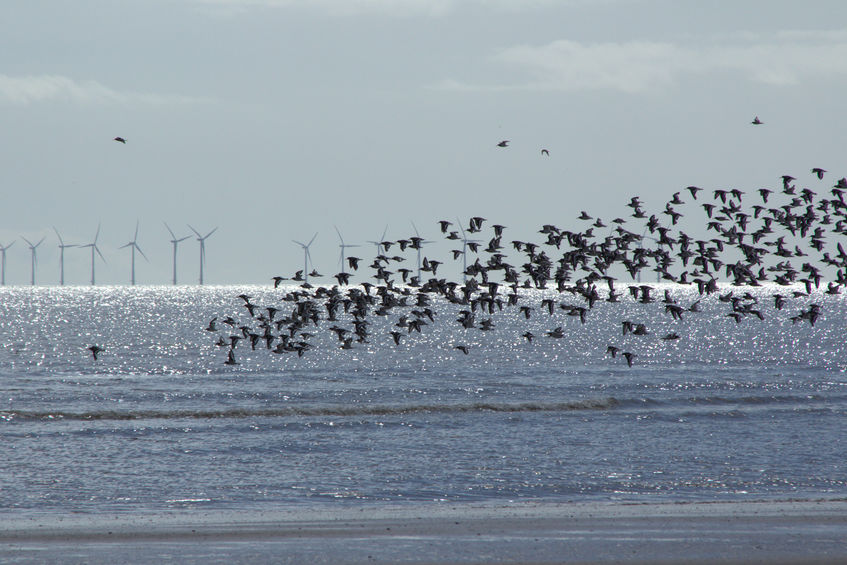The steady improvement in the water quality of the Great Lakes represents one of the real environmental success stories of recent decades. But the giant inland seas’ ecosystem now faces a new threat, this one coming from advocates of renewable energy.
For over a decade, the Lake Erie Energy Development Corp. (LEEDCo), a non-profit, has sought approval for its Icebreaker Wind project that would eventually place hundreds of turbines with spinning blades on the lake. It would be the first such facility on fresh water in the United States.
The project’s developers say the turbines will help combat climate change, but opponents point out that it is situated on a north-south flyway for millions of birds that migrate over Lake Erie every spring and fall. Indeed, Lake Erie is a renowned passageway for migratory birds that migrate between nesting grounds in Canada and winter homes in Central and South America. Conservationists are also worried about the threat Icebreaker poses to waterfowl that flock to the lake in winter.
Ecosystem Already Declining
Andy Jones, chair of ornithology at the Cleveland Museum of Natural History told the Washington Post (June 21) that Lake Erie has served as a stopover for as many as a quarter of North America’s red-breasted mergansers, a diving duck, and for delicate songbirds such as wood thrush and cerulean warbler. He adds that the turbines wouldn’t just be a hazard, they would be an attraction. When the lake is frozen in winter, waterfowl would be drawn to the open water created by the heat-generating turbines, he explains.
The warbler population is already in trouble, he told the Post. “The whole ecosystem is declining. Let’s not add another threat on top of that.”
The Ohio Power Siting Board gave its approval for LEEDCo to go ahead with a pilot project that would allow six turbines in a north-northwest line to go up eight to ten miles offshore from Cleveland. But as concerns mount over the project’s impact on birds, the board now says Icebreaker must conduct radar studies of bird and bat traffic over the proposed site before and after construction. What’s more, it wants nighttime operations of the turbines suspended during the months-long migration period, unless and until studies conclude that is unnecessary.
Lawsuits against Icebreaker have already been filed, and one of the project’s developers, Norway’s Fred Olsen Renewables, is reported to be losing interest. Meanwhile, Canadian officials are keeping a close eye on Icebreaker’s six-turbine pilot project. Canada banned wind turbines on Lake Ontario in 2011 pending the outcome of Icebreaker. If Icebreaker ultimately gets the green light for hundreds of turbines on Lake Erie, Canadian authorities could allow hundreds more to go up on Lake Ontario.
Undercounting Wind Turbine Bat Fatalities
Birds are by no means the only avian creatures threatened by wind power. In a new study, “Relating Bat Passage Rates to Wind Turbine Fatalities,” Shawn Smallwood and Douglas Bell report that the estimated 1.7 to 3.7 million bats killed by wind turbines in the U.S. each year could be greatly understating the carnage. They note that many injured bats can recover enough to fly away from the collision sites before dying from their wounds. Additionally, scavengers can quickly collect the injured and dead bats before humans and dogs can recover them. Smallwood and Bell estimate that the real kill rate may be 4 to 7 times than conventional estimates.
“At this rate, the extinction clock for North American bats may not be 50 years off, but only a decade or two away,” writes Kenneth Richard in notrickszone.com (June 25).
